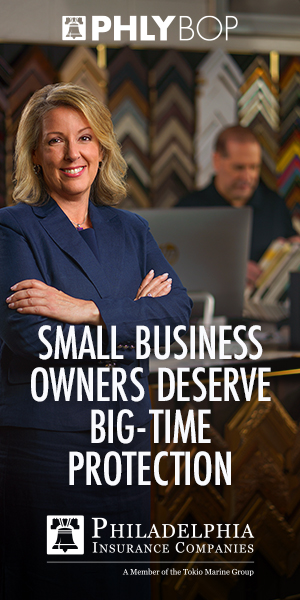While the “siren song” for tech becomes very strong,
people remain the critical element in relationship building
By Maura C. Ciccarelli
Defining a good customer experience is a tricky thing, since everyone thinks of it differently. But what’s true now and always has been is that good client relationships are at the heart of the trust-based business model that is insurance.
Still, customers’ expectations have changed in recent years. Amazon has made online commerce very easy and everyone expects that from their service providers, too. And, in today’s hard market with its rate instability, it’s not always easy to satisfy expectations.
As a result, the sirens’ song of technology tools has become very strong. People, though, are still the critical element of building strong relationships with customers.
How can agencies strike a delicate balance that preserves human interactions to meet and beat customer expectations while harnessing tech tools to make everything—for the client and agency—easier?
Customer experience focus
Having a culture where everyone feels responsibility for customer experience is the first step, says Elisha Cavanaugh, founder and president of Sound Pacific Insurance (the 2024 Rough Notes Agency of the Year) in Tacoma, Washington.
“It’s important to develop strong relationships because insurance is tied to a lot of our milestones in life, like emergencies and big life changes,” she notes. “When a client knows you and you have a relationship, that is going to help them feel protected and understood.”
And, as agency leaders know, trust and relationships keep clients from frequently shopping around and they drive referrals, too, Cavanaugh adds.
“Because [people] can go online and buy it themselves so easily or because they’re being bombarded with [online insurance] advertisements, I do think that we will continue to be expected to raise the bar—remembering people’s dog’s names and sending graduation and anniversary cards. All those human touches that are not happening in other areas,” she says.
And, naturally, making the process as simple as possible is a driving factor in developing processes and training the team, she adds. “Nobody wants to deal with their insurance. It’s never a fun call—it’s not like, you know, buying the Ferrari.”
“Businesses focusing on customer experience are really excelling,” says Kelly Donahue-Piro, president of Agency Performance Partners in East Greenwich, Rhode Island. Her company is an independent insurance agency consultancy.
She defines a good customer experience as a process that is effective, effortless, and engaging. But that’s not always easy, particularly since a lot of team members have a heavy workload and are burnt out from having the same difficult hard-market conversations with customers over and over again.
“They’re forgetting about the fact that we’re in service and it should be about the customer, not about us,” she notes. “It’s a perfect storm.”
People power
Agencies that give staff tailored training and access to helpful technology can help them work smarter, Donahue-Piro says.
The first step to developing a customer-experience-focused culture is to define the agency’s customer service values and then train people with standards and protocols that focus on the experience and not just the transaction.
“Everybody comes with their own version of how to serve customers,” she says. “For some people, that’s a lot of price sensitivity and they over-market for some people. [Or, some] only like email because [they] don’t like talking on the phone.”
Without a clear vision and training approach, it’s easy to hire the wrong people for the job, she says. “Is the experience you’re trying to deliver clear? Are you trying to be a fast transaction shop [or] a boutique [agency]?”
Tracking activities, Donahue-Piro says, can identify areas for making customer experience more amazing, such as focusing on overdue activities and understanding reasons for cancellation.
“We need to have very granular details that tell the story of what’s going on,” she says.
Plus, such analysis lets agencies identify what Donahue-Piro calls “time vampires”—needy, low-revenue clients who get a lot of agency attention.
“So, we actually over-service our worst accounts who are still never happy … who never pay their bills and have a lot of claims,” she says. “There’s nothing left for your best customers. That’s a problem.”
Another tactic is to analyze recorded phone calls, Donahue-Piro says, to see if people are just doing their job by the book—e.g., focusing only on the transaction and not on the relationship—or if they could benefit from role playing and coaching.
Her advice is to develop agency-specific scripts that include guidance for warm greetings, listening before asking questions, explaining processes, and following up later to ensure everything happened as promised.
“The conversation may not be super chatty but it’s also not one-dimensional,” Donahue-Piro says.
“I think the reason customer experience has not been front and center is because agencies have felt very held captive because it’s hard to hire,” Donahue-Piro adds.
But, there are solutions.
Agencies that can hire “green” people who don’t know insurance have had better customer experience trends after six months of training.
“They don’t know any different,” she says. “And, we’ve had higher retention. They’re following the process and using the scripts.”
For reps with tremendous institutional and carrier knowledge who are burnt out, targeted training and setting performance expectations can help. Another option, Donahue-Piro suggests, is to give them a new role—perhaps as a mentor to reps, being a floating rep, doing audits, or having a different position that isn’t heavily customer-facing.

“AI doesn’t offer judgment or discernment—everything is going to be based on statistics. [It’s] our judgment, our discernment, and our experiences that shape how we
communicate with people, how we show empathy, and how we shape the experience that a client is having.”
—Elisha Cavanaugh
Founder and President
Sound Pacific Insurance
Tech power
Cavanaugh notes that, as an agency owner, it’s been a challenge to find technology among the many offerings that will help improve customer experience without a tremendous investment in time and energy to set it up. It also doesn’t help that some legacy systems don’t integrate well with other technology and/or cause processes to be “clunky.”
It’s just too easy to get caught up in chasing the perfect tech stack.
“Sometimes, I wonder how much further along agencies would be if we put that same energy into the client experience, team development, and referral strategy,” she says.
Still, some technologies have been helpful, she notes, such as phone systems that have AI built right into them to summarize calls as well as predict future client behavior. “They can project shopping trends of a client because, based on past conversations, that client may be more likely to shop.”
Donahue-Piro says that AI can be helpful in day-to-day work, as long as agencies set standards for how it can be used and not used.
“You can’t trust it 100%. It’s your assistant. You have to still know what to say.”
“I think the reason customer experience has not been front and center is because agencies have felt very held captive because it’s hard to hire.”
—Kelly Donahue-Piro
President
Agency Performance Partners

On the plus side, some technology can help agency folks improve their customer interactions, Cavanaugh says, noting that she and her team are using Otter AI, an online meeting agent that can transcribe meetings and suggest ways to improve communication clarity.
“After I have a phone call with a client, I’ll upload it into Otter AI and use it as a coaching opportunity to say where I could have done better, where is my room for improvement. It’s been a super helpful tool,” she says.
One example: The AI noted how to reword sections to prevent client confusion about how deductibles worked depending on fault.
In another example, a junior team member worked with the AI tool to create a guide for better-structured client conversations that a more seasoned advisor would have.
In addition, customer-facing AI tools can’t always replace human interaction, Cavanaugh says.
“AI doesn’t offer judgment or discernment—everything is going to be based on statistics. [It’s] our judgment, our discernment, and our experiences that shape how we communicate with people, how we show empathy, and how we shape the experience that a client is having.”
Impacts of customer experience focus
By focusing on culture along with strategically applied tech help, Cavanaugh says she’s seen her agency’s revenue rise. Since there’s a long ramp-up time needed for implementing new technology, “it has to be worth it in the long term,” she says.
“Clients want convenience, but they also want connection,” she says. “I have clients who call in and they just want me to say I’ll take care of it. With others, I say, ‘how are you and the kids?’ And then there are clients who want to hear every possible scenario around the policy. That’s the discernment piece that I feel like we don’t get with AI. It can’t read the room.”
The author
Maura C. Ciccarelli is a longtime freelance journalist originally from Philadelphia. She writes about business and more from an adobe home in southern New Mexico, after spending nine years living on the road full time with her husband in their Airstream trailer.






